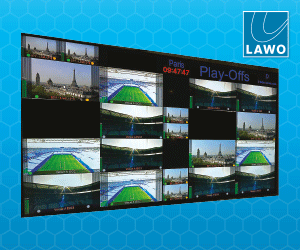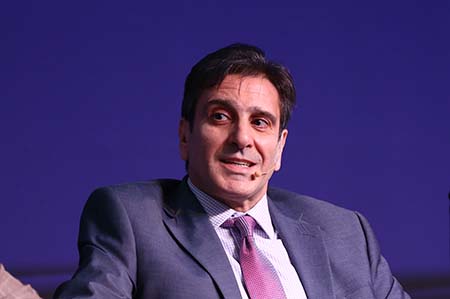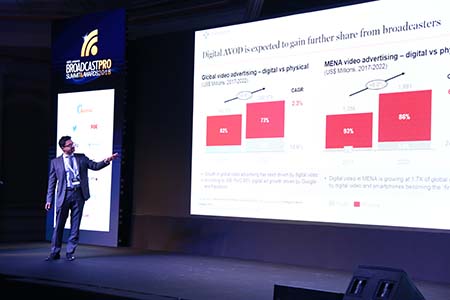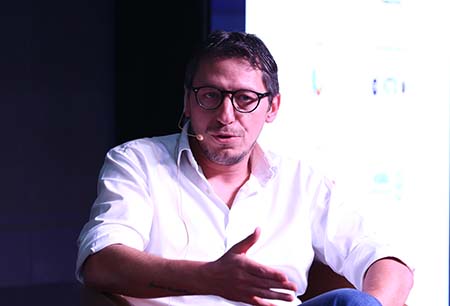The sports media industry in the Arab world is rapidly evolving due to a slew of emerging tech and swiftly changing viewer trends. Market leaders discuss the state of the industry at the ASBU BroadcastPro Summit.
The Middle East sports industry is expected to grow by 8.7% by 2026 – more than double the rate of the global sports industry, which is forecast to slow to 3.3% growth over the same period, according to the World Economic Forum. In esports, the global market is projected to grow by 21%, from $1.44bn in 2022 to $5.48bn in 2029, according to Skyquest’s Global Esports Market Size report. Notably, the fastest growth rate is in the Middle East.
Given the statistics, it is evident that the regional industry is in a state of incredible flux, with mega-investments coupled with rapidly evolving trends and technological advances impacting the industry within very short periods. This dynamism raises several questions: how can sports broadcasters and rights holders make sense of these rapidly evolving and changing trends, and monetise them? How will OTT transform sports broadcasting? Which are the emerging technologies to watch out for?
 BroadcastPro ME brought together industry leaders to answer these questions at a panel discussion titled Game Changing Trends in Sports Broadcasting. Part of the ASBU BroadcastPro Summit, it featured Fadi Jumaa, Business Development Director Middle East, VITEC, and Peter Van Dam, Chief Operating Officer, Saudi Pro League Media House (SPLMH), with sports media expert Karim Saade, Marketing Communications Director at Intigral, moderating.
BroadcastPro ME brought together industry leaders to answer these questions at a panel discussion titled Game Changing Trends in Sports Broadcasting. Part of the ASBU BroadcastPro Summit, it featured Fadi Jumaa, Business Development Director Middle East, VITEC, and Peter Van Dam, Chief Operating Officer, Saudi Pro League Media House (SPLMH), with sports media expert Karim Saade, Marketing Communications Director at Intigral, moderating.
Factors influencing trends
Karim Saade set the stage for the discussion by pointing out that Saudi Arabia is the industry’s top broadcast tech and content trendsetter now, with Cristiano Ronaldo’s induction into Al Nassr. “When Ronaldo came in, it was the first indication of what the leadership wanted to do with sports and what it would enable.” His move to the Saudi Pro League’s (SPL) Al Nassr club captured the world’s attention and put Saudi Arabia on the global football map. The country is now set to host the 2023 FIFA Club World Cup later this year, followed by the World Cup in 2034. The same ambition can be seen in the Saudi women’s football league.
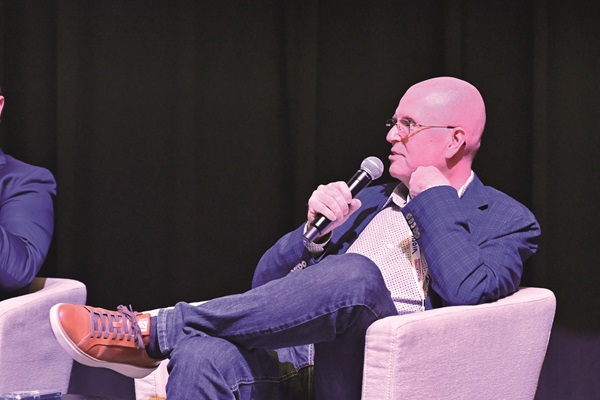
“Saudi Arabia is not just looking at bringing the sport up but is also bringing in new standards and new technologies,” said Peter Van Dam.
Sports and sports media are a massive part of the Kingdom’s economic diversification plan, and the government is investing heavily in building a robust infrastructure and producing eclectic content that resonates regionally and globally. This makes return on investment (ROI) a critical performance index for broadcasters and rights holders, and therefore a prime motivation behind any innovation in Saudi Arabia and across the region.
In addition to enhanced ROI, several vital factors shape emerging trends in sports broadcast, noted VITEC’s Fadi Jumaa. These include the rising cost of content, high competition in content acquisition, the emergence of several viewing platforms for audiences, and optimising content and its delivery for these platforms. “The content itself is becoming very dispersed, which creates issues for the broadcaster, and then there is the need to diversify the production for different audiences,” he said.
Emerging tech in sports broadcast
Innovation sometimes responds to circumstances that push companies to think outside the box. Jumaa gave the example of the 2020 Olympics, which occurred amidst COVID-induced restrictions. Given the ‘no audience’ rule, VITEC had to also develop a way to add multilingual commentary to the video transmitted from the stadiums in Japan.
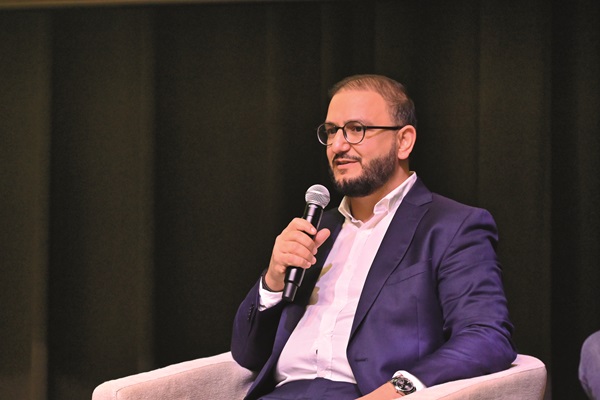
“Eurosport needed to translate the commentary for the different matches and tournaments into several languages, so VITEC offered them a remote production solution where the video was sent to the commentators who were working from home. The commentators added the audio and sent it back to the production facility in Tokyo from where it was broadcast. The whole process took less than 300 milliseconds. This arrangement enabled the channel to save costs, as it didn’t have to fly the commentators to the venue and could draw part-time contracts with them. This created a new trend,” said Jumaa. The multilingual commentary also helped Eurosport acquire more extensive reach, and it is now using remote production for different sports to lower costs and enhance ROI.
Remote commentary is being used for the broadcast of Saudi Women’s League matches, with commentators in UAE and KSA working remotely from home, added Peter Van Dam.
“We did the same thing in the last season with Portuguese and English for the Al Nassr games. These new technologies are not limited to the 90 minutes of the game, but also around the game. We can’t change the players, goals or the form of play. But we can change how the viewers experience the game, which is a very important part of what we aim to do in the future.”
Immersive tech in sports broadcast
Broadcasters are increasingly relying on technology to capture the younger generation’s attention, and the panellists agreed that they demand more engagement. “They like to be part of the game. It’s about having bragging rights with their friends and on social media,” noted Saade. This means broadcasters must now look at novel ways to attract younger audiences and keep them engaged in multiple ways during matches.
Van Dam recalled witnessing a sporting event during which Gen Z fans were watching one match on TV and another on their phones, and discussing both simultaneously. “This is one segment we want to tap into. We are looking at getting influencers on board to give alternate views on the game as it plays out. Engaging Gen Z viewers in commentaries, interviews and content is also part of the roadmap and strategy.”
SPLMH is also exploring technologies allowing viewers to create avatars for SPL players, as this has proved popular with NFL and NBA fans.
Gen Z is heavily invested in vertical-and short-content video formats such as TikTok, and broadcasters must also cater to this demand. This is where AI plays a big role in sports broadcast.
Van Dam said that SPLMH uses WSC and Greenfly, which are heavily reliant on AI. WSC creates highlights and generates short-form video content from live broadcasts that can be published to any digital destination. Greenfly categorises and files the clips generated by WSC into user-defined categories, and also allows photographers to upload their photos on the platform, which will segregate them. These catalogues are then available to broadcasters, clubs and even players, and the clips can be uploaded to their social media accounts.
SPLMH is now testing the use of WSC for highlights with commentary by adding voice recognition. “We want WSC to analyse the commentary, and where the commentator stops a sentence, fit that part into the clip,” explained Van Dam.
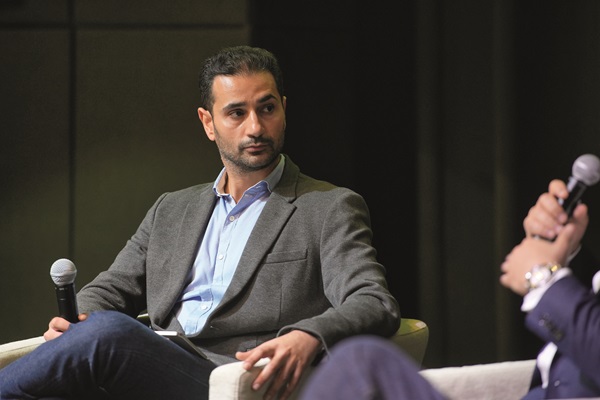
Jumaa pointed to the use of AI in VITEC’s products, such as adaptive bitrate, which allows the broadcast bandwidth to adapt to device bandwidth as it moves. “It makes sure the video is continuous. Of course, it will affect the quality, but you will have a continuous feed,” he said.
VITEC is now looking at the possibility of using AI and metadata to analyse which devices a viewer uses to consume content, and then automatically create different profiles for that user based on the screen being used.
E-gaming and data collection are also set to become a vital part of broadcast tech going ahead. The panellists expected data collection to extend beyond the limits of simple game analysis to enabling comprehensive player profiles, boosting fan engagement, and developing rewards and loyalty programmes.
Using technology to monetise macro infrastructure
Moving beyond the borders of production studios, technology can be used to enhance the spectator experience at stadiums. With match-goers spending nearly six to seven hours at the stadium, broadcasters and rights holders feel the need to work closely with the organisers to enhance their experience and derive maximum revenue from that platform. As a technology vendor, VITEC is looking at devising lucrative business models to help its clients get maximum ROI.
“There are multiple ways in which we can leverage technology,” said Jumaa. “For instance, we are considering the technology for ultra-low latency to transmit the same event to fan pits. We are also looking at having video wall processors inside stadiums, covering walls and even vending machines to create more advertising avenues.”
 The role of OTT in sports broadcast
The role of OTT in sports broadcast
While regional networks will continue to play a critical role in reaching local audiences, broadcasters must look at expanding their reach internationally. Streaming platforms are a potent platform for this.
Van Dam admitted that SPLMH is exploring the integration of OTT platforms for the long run: “We believe that OTT will play a crucial part in monetisation, because we can use it to reach a bigger audience with more diverse and unique content.”
In addition to enhanced ROI, OTT also gives broadcasters access to more data, such as who is watching the content, from where and for how long, allowing broadcasters to acquire more accurate audience analyses.
The panellists agreed that broadcasters must also develop new ways to address advertisements and sponsorship formats if OTT platforms are to be roped in for live sports broadcast. “We will have to make sure we get the technology in place and put it in a frame where we can sell it regionally and internationally on the right path,” said Van Dam.
Subscription fatigue is another challenge rights owners must tackle as the number of streaming platforms increases, Jumaa pointed out.
“Right now, the average subscriber needs to pay for different platforms or apps to get content they like. This can add up to quite a lot of money. And that is a great push for pirate boxes, which give you a single access point to all the content. For just $20-30 a month, a viewer gets access to all the sports content in the region on a pirate box. Of course, it’s not a seamless experience, there are glitches, but the viewer can access the content.”
He concluded: “To counter piracy, broadcasters must look at incorporating different kinds of content on one platform and selling it as a comprehensive support package to the consumer.”


